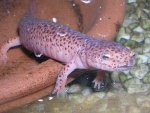Lizamphid
New member
- Joined
- Dec 27, 2009
- Messages
- 36
- Reaction score
- 1
- Points
- 0
- Country
- United Kingdom
Hi
Im looking for a care sheet for Red Salamander. These Salamanders are not often up for sale here in the UK, i want to know what is involved raising them before i think about getting them. Not had any joy doing a google on care for them
many thanks
Im looking for a care sheet for Red Salamander. These Salamanders are not often up for sale here in the UK, i want to know what is involved raising them before i think about getting them. Not had any joy doing a google on care for them
many thanks

